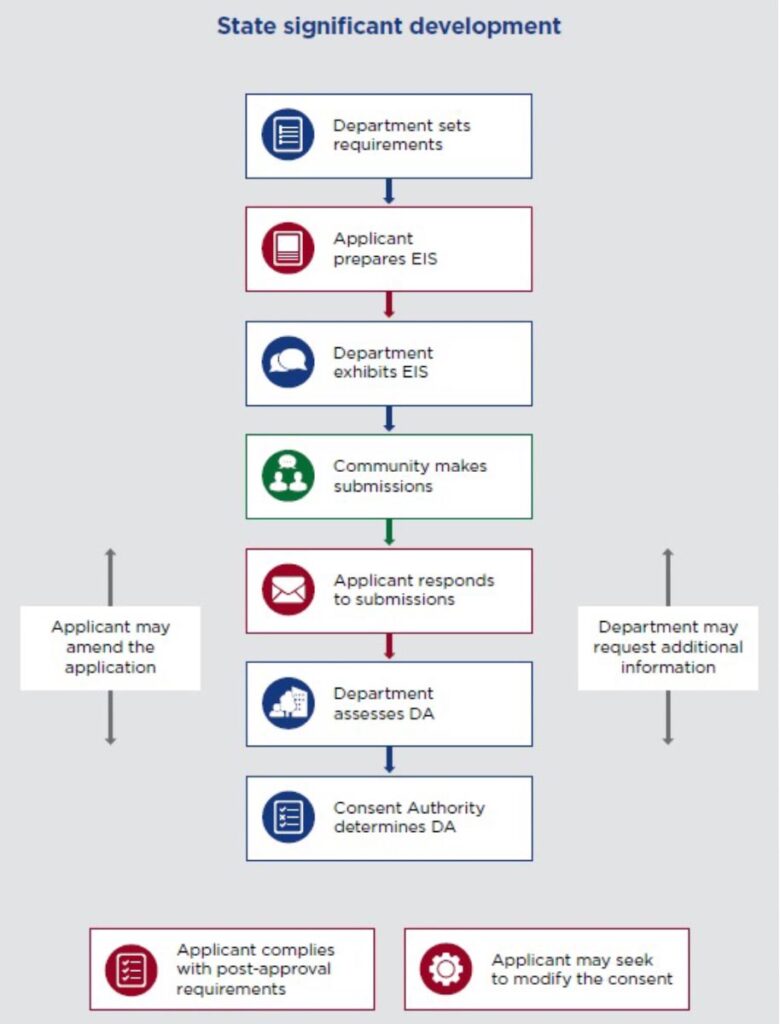- State Significant Developments (SSD)
Energy generating projects (including wind and solar developments) are classified as state significant developments. SSD are deemed to have state significance due to the size, economic value, or potential impacts. They are assessed at a state level rather than the local council level.
State significant projects are assessed by the NSW Department of Planning, Industry and Environment. The main steps in this assessment are shown in the following diagram from State Significant Development Guidelines, November 2021. The EIS is the Environmental Impact Statement which is due to be released in the short term. Submissions made by the community in the 28 days following its release are one of the most significant ways individuals and community groups can have a voice in the assessment process. To receive notifications on the Winterbourne Wind Farm planning process from the planning department, go to https://www.planningportal.nsw.gov.au/major-projects/projects/winterbourne-wind-farm and click on Notify Me.
- EnergyCo
Energy Corporation of NSW (EnergyCo), is the statutory body responsible for developing and co-ordinating the NSW Government’s Electricity Infrastructure Roadmap. It is the department responsible for planning in the 5 REZ’s (Renewable Energy Zones) – Central-West Orana, New England, South West, Hunter -Central Coast and Illawarra regions. EnergyCo operates under the direction of the NSW energy minister, Matthew Kean.
- AEMO
Australian Energy Market Operator manages electricity and gas systems and markets across Australia. They do not have capacity to over-rule or control generation, only how the energy is shifted around the states.
- What is an EIS


